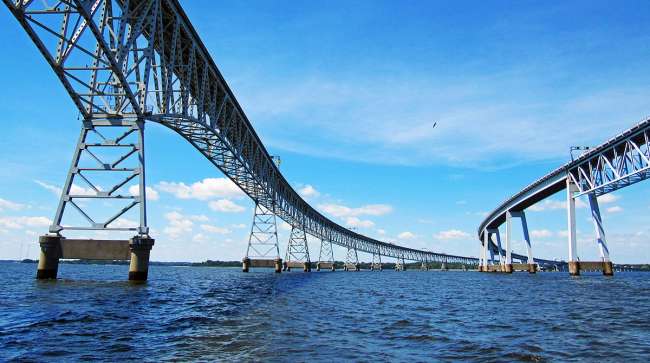Staff Reporter
ASCE Releases Infrastructure Grades for Mississippi, Maryland

[Stay on top of transportation news: Get TTNews in your inbox.]
Amid the coronavirus pandemic, the American Society of Civil Engineers virtually released infrastructure report cards for Mississippi and Maryland, both of which reflected improved overall scores.
Mississippi received a grade of D+, a slight improvement from the last assessment in 2012. The report card evaluated 12 sectors of infrastructure: aviation, bridges, dams, drinking water, energy, inland waterways, levees, ports, rail, roads, solid waste and wastewater.
Maryland fared better, receiving a C, which also assessed 12 categories, including aviation, bridges, dams, drinking water, energy, ports, rail, roads, solid waste, stormwater, transit and wastewater. On its last report card, issued in 2011, the overall grade was a C-.
FullReport MS 2020 by Transport Topics on Scribd
In Mississippi, bridges and roads each earned a D-, tying for poorest grade on the report card. Some 3,127 of Mississippi’s 17,072 bridges are weight-restricted. Although the state Legislature voted in 2018 to provide additional annual funding for bridge maintenance and rehabilitation, the report card indicates Mississippi still lacks the resources to conduct necessary bridge renovations.
The report card reflects that 43% of Mississippi’s locally and state-maintained major urban roads and highways have pavement that is in poor condition. According to the report card, most of Mississippi’s road projects are funded by revenue raised from the fuel tax, which hasn’t been adjusted in more than 30 years. Mississippi’s fuel tax rate is 18.4 cents per gallon for gasoline and 18 cents per gallon for diesel.
Jacob Forrester, chairman of Mississippi’s report card committee, identified a lack of funding as a substantial obstacle to making infrastructure improvements.
“One of the biggest things has been a lack of reinvestment,” Forrester said. “There’s no real great look at improving the roads. You’re not providing for any growth there. Between that and the percentage of poor condition and the amount of money that needs to be invested in the roads and bridges here, there was no justification for ranking [the category] over a D-.”
Maryland ASCE Report Card 2... by Transport Topics on Scribd
In nearly every sector of infrastructure, Maryland performed better than Mississippi. Roads received a C, marking a modest improvement from the C- on the 2011 report card.
Carrie Nicholson, chairman of the Maryland report card committee, said one of the biggest challenges remains insufficient roadway capacity. Strained capacity can contribute to congestion, which is particularly snarled in the Baltimore and Washington metropolitan regions.
Maryland’s bridges received a B, the highest grade on the report card. However, Nicholson said challenges remain concerning the age of the bridges.
“The average age of Maryland bridges is 48 years, which is nearing the end of their service life,” Nicholson said. “Routine maintenance will need to be supplemented with timely new project delivery.”
The evaluations were disclosed amid stay-at-home orders issued because of the coronavirus. Forrester and fellow committee members convened a virtual news conference April 14 to unveil their report card for Mississippi. Nicholson and her colleagues convened a similar conference March 19. (The bulk of each committee’s work associated with tabulating the grades was completed before the coronavirus pandemic struck the country.)

Although the unveiling for Mississippi normally would have been held at the Capitol in Jackson, Forrester said it was their responsibility as engineers to release the report card virtually and ensure that lawmakers had an informative infrastructure reference tool at their disposal.
“At the end of the day, for decades now, infrastructure investment has been one of the pillars of economic growth and healing,” Forrester said. “We thought that it would be more appropriate, even with the times we’re living in, to go ahead and release that report with a goal that we want to be part of the solution for helping the economy come back from a stumbling here.”
If not for the virus, Nicholson said the committee would have planned an event with state government representatives and a significant backdrop such as the Statehouse or a historical landmark.
“We were very excited to share our data and infrastructure remains important,” Nicholson said. “Whatever the world is doing around us, infrastructure is integral to health, safety and welfare.”
Want more news? Listen to today's daily briefing:

